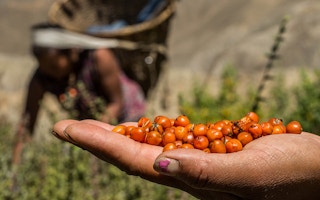Asia needs to make extra efforts to defeat hunger after progress has slowed in the last five years, including promoting so-called “smart crops” as an alternative to rice, the head of the UN food agency in the region said.
Kundhavi Kadiresan, representative of the Food and Agriculture Organisation (FAO) in Asia, said the region needs to focus on reaching the most marginalised people, such as the very poor or those living in mountainous areas.
The Asia-Pacific region halved the number of hungry people from 1990 to 2015 but the rate of progress slowed in many countries - such as Afghanistan, Bangladesh, India and Cambodia - in the last five years, according to a December FAO report.
“The last mile is always difficult.. so extra efforts, extra resources and more targeted interventions are needed,” she told the Thomson Reuters Foundation on the sidelines of a business forum on food security in Jakarta on Tuesday.
“
We are calling them smart crops to get people not to think about them as poor people’s food but smart people’s food.
Kundhavi Kadiresan, representative, Food and Agriculture Organisation (FAO) in Asia
She said government and businesses needed to develop policies to help make food more affordable, while changing Asians’ diets that rely heavily on rice.
“We have focused so much on rice that we haven’t really looked at some of those crops like millets, sorghum and beans,” she said.
A campaign is underway to promote these alternatives as “smart crops” to make them more attractive, Kadiresan said.
“We are calling them smart crops to get people not to think about them as poor people’s food but smart people’s food,” she said, adding that they are not only nutritious but also more adaptable to climate change.
Soaring rice prices, slowing economic expansion and poorer growth in agricultural productivity have been blamed for the slowdown in efforts to tackle hunger.
More than 60 per cent of the world’s hungry are in Asia- Pacific, while nearly one out of three children in the region suffers from stunting, according to the FAO.
Achieving zero hunger by 2030 is one of the UN’s Sustainable Development Goals adopted by member states in 2015.
This story was published with permission from Thomson Reuters Foundation, the charitable arm of Thomson Reuters, that covers humanitarian news, women’s rights, trafficking, property rights, climate change and resilience. Visit http://news.trust.org.

















